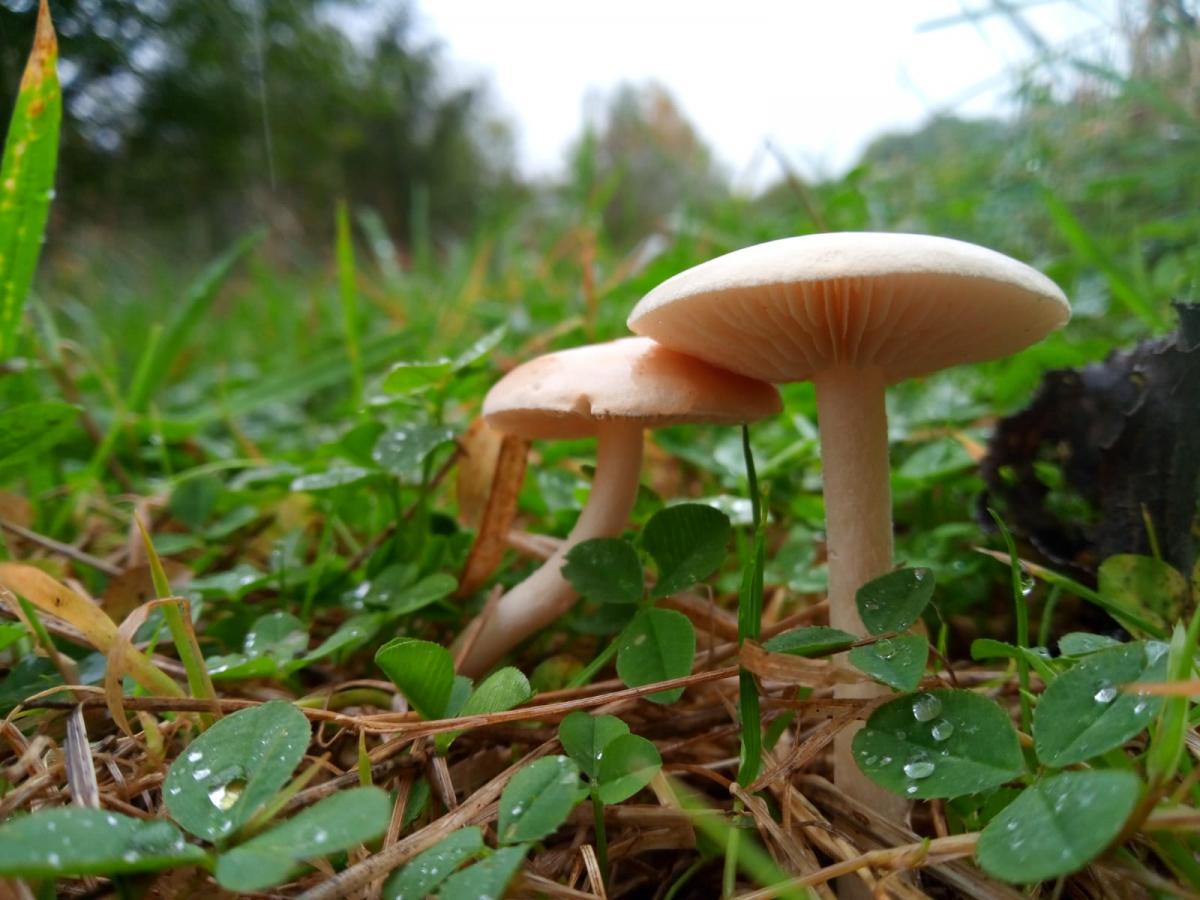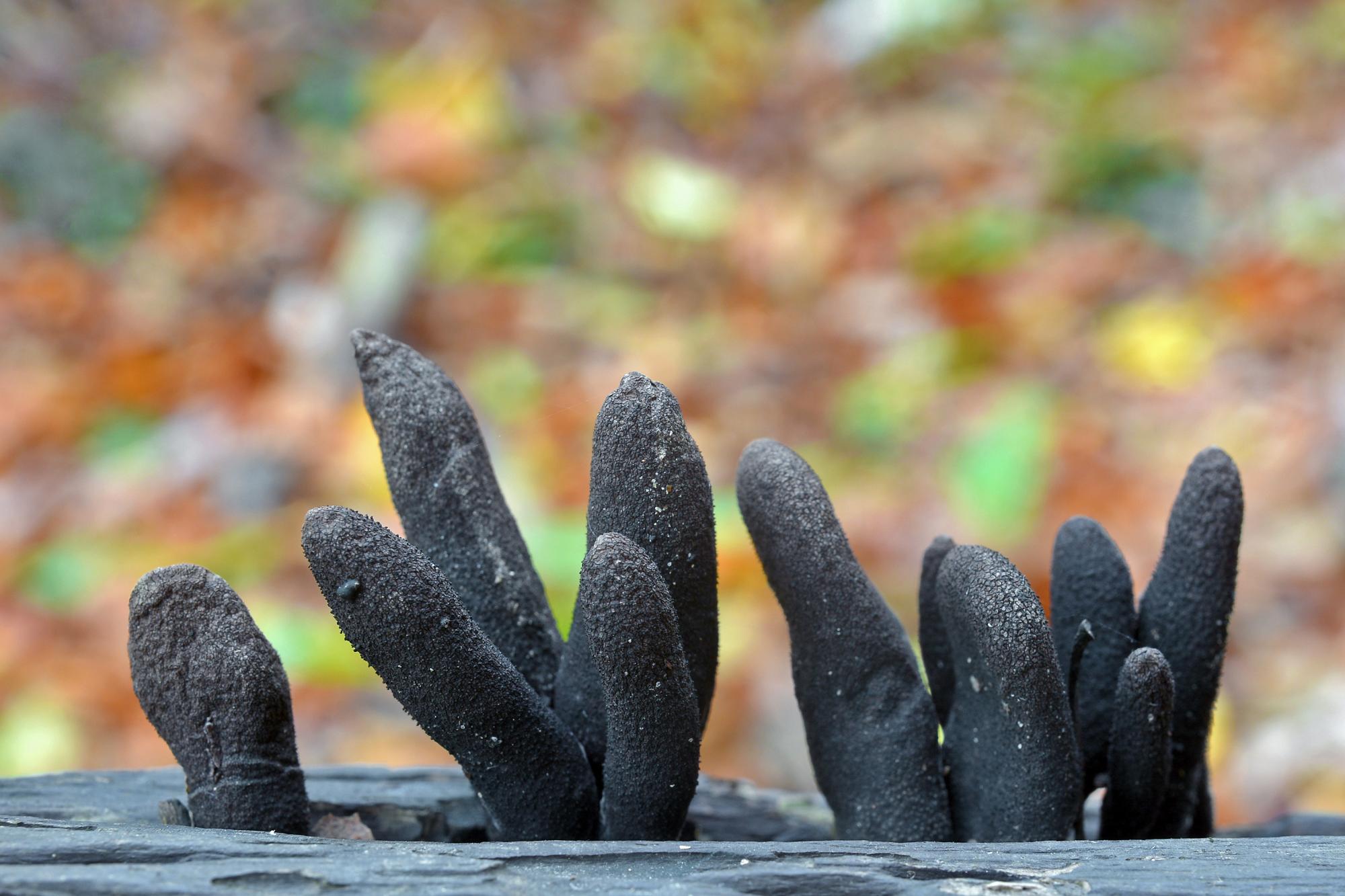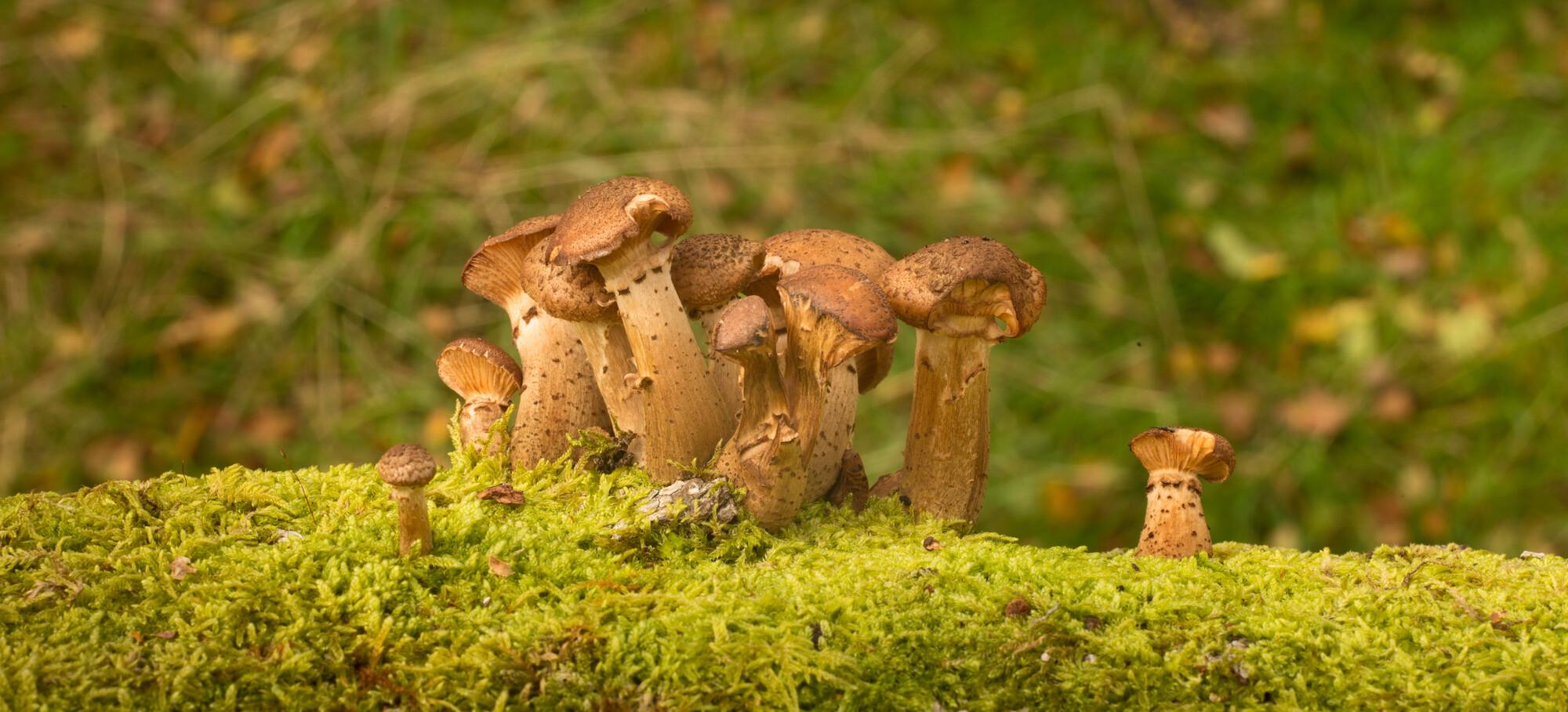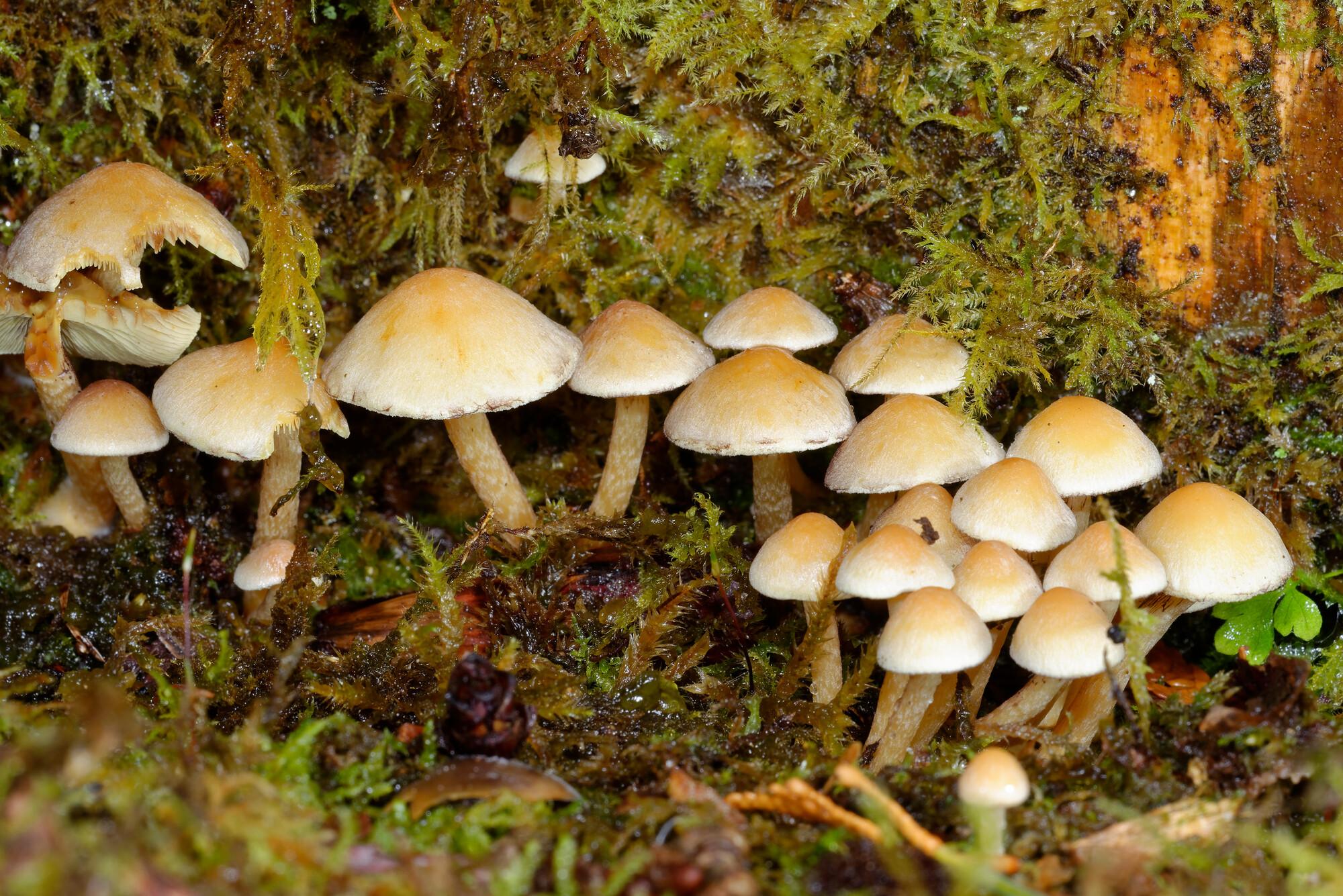
Fungi in the Forest
Fungi are a fascinating and diverse feature of the woodlands in the Heart of England Forest. Many species can be spotted all year round, but you will see a particularly widespread array of different mushrooms and toadstools on autumnal walks.
The history of fungi
Long before trees overtook land, the earth was covered by fungi. Researchers have estimated that fungi existed 600 million years before the first recordings of land plants.
In 2020, fossils in a Belgian museum were identified as fungal structures dating between 715 and 810 million years ago, making them some of the earliest specimens ever recorded.
What are fungi?

More than 100,000 species of fungi have been identified by biologists, and it is estimated that more than 1.5 million species currently exist on Earth.
Fungi can be single-celled organisms, known as yeasts, or very complex multicellular organisms. Most fungi are multicellular, and these complex organisms are made up of filaments of hyphae, the building blocks, which come together to create the vegetative part of the fungus, the mycelium. The hyphae and mycelium exist below the ground.
The part of the fungus that we see above ground, with their weird and wonderful shapes and colours, is only the fruiting body – the reproductive organ of the fungus.
Further to this, fungal spores are everywhere in the air that we breath, the surfaces we touch and in the soil too.
The importance of fungi in the Forest
Fungi have a symbiotic relationship with trees, meaning that both benefit from each other. Over 90% of all plant species have mycorrhizal relationships with a fungal species, and here in the Forest this relationship is vital for the good growth and survival of our trees and plants.
Fungi aid the uptake of nutrients by trees and protects the roots from parasites that can be found in the soil, and in return the fungi get sugars from the trees that they need.
Many fungi are saprophytic meaning they live on dead or dying wood, leaf litter, or animal bones or faeces. Saprophytes play a very important role in the ecosystem, breaking down dead organic matter, starting the decay process and making it easier for other plants and creatures to access the nutrients locked up in dead plants. They are a great example of why leaving deadwood in forested areas is so important for biodiversity.
Top 5 fungi to spot on autumn walks
Here are five species we would recommend keeping an eye out for this season.
Common puffball

The common puffball is a species that grows on the ground in woodland from late summer to late autumn. It starts off a white colour and becomes yellowish brown on its subglobose head and distinct stem. They can vary from 2.5cm-6cm wide and 2cm-9cm tall.
Most puffballs are edible when they are young and white inside so are a favourite amongst foragers.
Dead man's fingers

Not to be confused with dead moll’s fingers, which looks similar but is daintier and more uncommon, dead man’s fingers can be spotted on most deadwood broadleaf trees – mainly sycamore - around the Forest.
This fungus has certainly earnt its name! When young, it is pale grey with whitish tips, but when it has matured, it appears in clusters of hard, swollen, black fungi that looks a bit like decaying fingers reaching out of the ground towards the sky.
It is a saprobic fungus (living in an environment rich in organic matter and relatively free from oxygen) that specialises in consuming the polysaccharides in timber. This leaves soft, nutrient-rich debris on which many invertebrates feed.
Honey fungus

Honey fungus is the common name given to several different species of the Armillaria fungus. The most telling sign that honey fungus is growing on a tree is white fungal growth between the bark and wood, usually at ground level. In the autumn months, clumps of honey-coloured toadstools may also appear around this area.
This fungus spreads underground by direct contact between the roots of infected and healthy plants, and by means of black, root-like structures call rhizomorphs which can spread from infected roots through soil.
It enjoys damp environments and can be spotted growing on deadwood across all our woodlands.
Jelly ear fungus

Jelly ear fungus – so named because of its jelly-like texture and appearance – mainly grows on dead elder trees and on fallen branches. It is rare but not unknown to also find this fungus on other kinds of broadleaf trees including beech and ash. It is a very common species across the UK and appears across the damp, shady areas of the Forest during most wet spells.
The outer surface of the lobed fruitbody is brown with a purple tinge and covered in a fine greyish velvety down. If you aren’t put off by its strange appearance, it is edible when cooked!
This species is also known as the wood ear or Judas’s ear. The latter is a reference to the legend that Judas hanged himself on an elder tree out of shame after betraying Jesus, and that the fungal ‘ears’ that emerge from elder woods are visible residues of Judas’s tormented spirit.
Sulphur tuft

This poisonous fungus is easy to spot due to its bright colour – its domed caps become flatter with age and are a yellow colour with reddish-brown centres. It can be a difficult species to identify as its appearance can vary.
This species can be found across deciduous and coniferous woodland and usually grows in tufts on rotting wood.
Fungi spotter's guide
Find more information about fungi species to spot on your walks in our handy spotter’s guide in the Forest guide section of our website.



